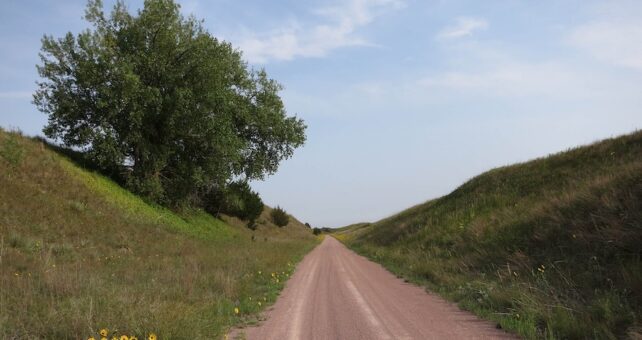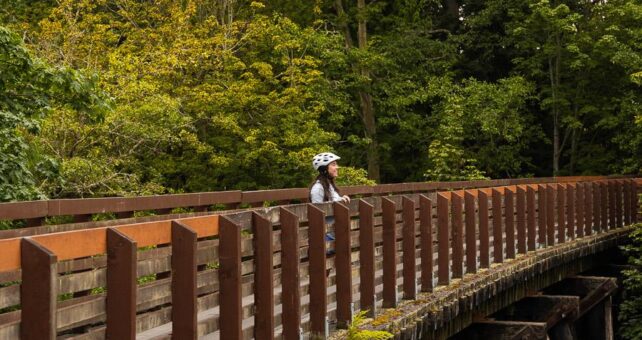Prairie Corridor Case Study
Prairie Corridor Case Study
Prairie Corridor | Photo courtesy Lincoln Parks and Recreation Department
Conserving Nebraska’s Natural Heritage for a
Sustainable Economic Future
Project Details
Lead Authority: Lincoln Parks and Recreation Department
Total Project Cost: $22,549,700
Funding Pledged to Date: $5,500,000
Federal: $0
Local: $1,660,000
Private: $3,840,000
Shovel-Ready: Within 3 years or less once land is acquired (10-12 years)
Type: Rural, urban
Transformative Impact
Job Creation: An estimated 383 jobs directly1
Transportation Impact: Creates a link between trail networks spanning more than 134 miles in Lincoln and rural Lancaster County with minimal environmental disruption.
Economic Impact: The trail will develop ecotourism by drawing more than 400,000 visitors through the region to education centers and small rural towns.2 Businesses will be able to tout the trail as an amenity to recruit talented workers, competing with large cities like Kansas City, Minneapolis and Denver.
Environmental Impact: The Corridor will preserve a large section of the last 2 percent of Nebraska’s tallgrass prairie ecosystem, allowing hundreds of local plants, insects, birds and animals to flourish.3
Project Description
The Prairie Corridor on Haines Branch in Lincoln, Nebraska will provide recreational and educational opportunities to residents and visitors while preserving the area’s unique and vibrant natural habitats. A completed trail within the corridor will be 14.5 miles in length, spanning from Pioneers Park in Lincoln to Spring Creek Prairie Audubon Center south of the village of Denton. Additionally, the Prairie Corridor trail will become part of an extended regional network of more than 134 miles of trails—including the well-known MoPac Trail in Lincoln.
The Prairie Corridor will provide multiple benefits for the region. When completed, it will provide economic development, environmental education and preservation and connect people to important regional amenities.“Tallgrass prairie is our natural resource,” said Michael Forsberg, photographer and conservationist. “Let’s claim the tallgrass prairie as our own. Let’s embrace it and protect it.”
The Prairie Corridor is envisioned as an economic driver, revitalizing Lincoln and the surrounding rural area. Nebraska relies on recreational tourism, and the trail will take advantage of this interest, attracting more visitors—and bringing in more dollars. In addition, the Prairie Corridor trail will help address Lincoln’s labor supply issue. Doug Ganz, vice president of Pinnacle Bank and a supporter of the trail, said “These types of amenities are really helpful when recruiters are talking to people about what you can do in Lincoln.”
In addition to enhancing the economy, the Prairie Corridor Trail will allow more locals and visitors to experience the area’s unique tallgrass prairie habitat. The native prairie in the region is home to hundreds of bird species and many more plant species. The trail will allow people to envision the land here before settlers began cultivating it. “This will serve as a healthy amenity and an economic driver by attracting families to live or move here,” said Elaine Hammer, founder of the Great Plains Trails Network. “What a legacy we can leave for future generations.”
SOURCES
1 Estimated at 17 jobs per $1 million spent, according to a study commissioned by the American Association of State Highway and Transportation Officials (AASHTO) on American Recovery and Reinvestment Act (ARRA) job creation; jobs in terms of full-time equivalents.
2 Prairie Corridor, http://prairiecorridor.org/home/economic-opportunity/
3 Outdoor Nebraska, http://outdoornebraska.gov/wp-content/uploads/2015/09/NebraskaNaturalLegacyProject2ndEdition.pdf

Donate
Everyone deserves access to safe ways to walk, bike, and be active outdoors.

